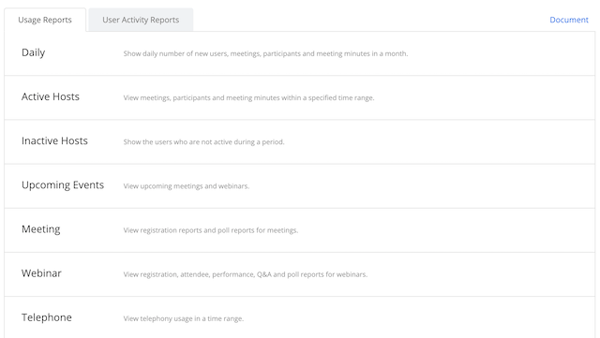Zoom vs. Skype: What are the Pros and Cons for Team Communication?
For remote teams, Zoom and Skype are two of the most recommended communication tools. You can use both platforms to hold video calls, chat, and host ...
by Emily Iwankovitsch
Social Media Marketing Manager
Video conferencing — is it a blessing or a curse?
With video conferencing, you can hold meetings with a team scattered around the globe.
But, it's also host to a series of disadvantages:
Despite these issues, the advantages of video conferencing make it difficult to replace. Being aware of these advantages, as well as the potential drawbacks, will save your team a ton of time and drastically improve collaboration and productivity.
For remote work, video conferencing is currently one of the better methods out there. However, as new technology emerges, video conferencing may quickly become outdated, due to the downsides.
But do these downsides completely overshadow the benefits?
Let's take a look.

For many remote teams, video conferencing tools like Zoom, Google Hangouts, and GoToMeeting make it easy to collaborate and connect effectively. Groups can record calls and presentations, then get them transcribed with the click of a mouse. Anyone can join, regardless of their location. These benefits make it a good solution for remote work.
Video conferencing has made remote work a viable option for most businesses. Companies can hire highly-qualified talent from around the world without needing to relocate to their industry's geographic hubs.
Team members who are only required for a few minutes can join without needing to travel. Someone can hop on, give feedback, and leave the call without disrupting their workday. The ease of attendance makes video conferencing, for many teams, preferable to in-office meetings.
Many video conferencing tools provide analytics and data about your meetings, which isn't easily achievable with in-office sessions. For instance, using Zoom, you can build usage reports that track attendees, active hosts, how many meetings take place per day, and the amount of time spent on meetings.

With the highest available pricing tier, you can also create executive business reviews, which include data about trending adoption analysis and ROI tracking. In time, this information can help you understand the value and effectiveness of your meetings.
There are a lot of similar capabilities between in person meetings and video conferencing. You can record the meeting and get your notes transcribed. You can have lengthy, in-depth conversations. You can present slides. But wrangling all the required resources for in house meetings will rarely be as smooth or as affordable as using a video conferencing tool.
Conference room recording systems can cost thousands. They're tricky to get the right camera angles and quality sound without professional installation. And even then, there's a chance your room isn't optimized for recording.
You need to get your slides on the one computer that's hooked up to the projector or configure Airplay. However, with video conferencing tools, everyone gets a whiteboard. Anyone can share their screen to show their slides. With Rev.com, notes can be transcribed and delivered quickly.
With tools like Slack, you can also draw and annotate on your screen. You can virtually sketch out ideas with tools like Sketchboard. These features often make video conferencing the leaner, more agile solution.

Remote work is rapidly becoming the norm, with over 63% of companies hiring remote workers. And as remote work grows and continues to evolve, teams will need more than web conferencing tools can deliver. That's why it's critical to understand the disadvantages of video conferencing tools, and how they can potentially hold you back.
In an office, you can lean over and tap someone on the shoulder whenever you need to talk. This is hard to replicate for remote teams because you can't hang out on a video call all day. It's not practical to call someone every time you have a question or idea.
In the long-term, you can't solely rely on web video conferencing to improve team communication.
In an office, you can overhear conversations, have fluid discussions, and listen to feedback other team members are getting. For example, imagine you're walking through your office, and you overhear someone talking about a special project. You can chime in and share your ideas naturally.
In a remote space, these occasions are few and far between. And these seemingly meaningless interactions are, in practice, really good for your team. They're good for morale, creativity, and productivity.
The issues with the audio and video of conference calls are so well known, there are parody videos about them. How many times have you been on a call, only to have the call drop, the picture pixelate, or the audio cut out?
People talk over each other, and the video conferencing platform system doesn't immediately pick up who's speaking. An attendee doesn't go on mute and starts coughing or talking to their spouse, which causes the camera to switch while someone else is presenting.
These disruptions can be distracting. And when it happens, it can interrupt the flow of a meeting.
When everyone was using teleconferencing, video conferencing was a game-changer. Now, video conferencing is far from perfect and leaves many teams hungry for a better solution.
Related Article:

by Emily Iwankovitsch
Social Media Marketing Manager
For remote teams, Zoom and Skype are two of the most recommended communication tools. You can use both platforms to hold video calls, chat, and host ...
Subscribe now to be first to know what we're working on next.
By subscribing, you agree to the High Fidelity Terms of Service